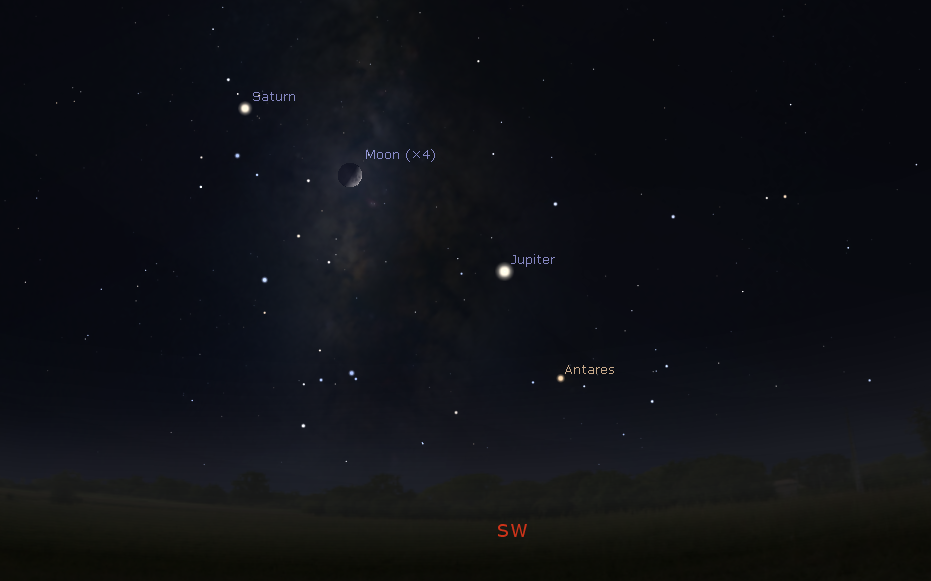Early in the night during the Fall, you may notice a few bright objects in the southern sky. Two of those are planets (Saturn and Jupiter) and one is the bright reddish star Antares. Jupiter is the planet closest to Antares. Antares is located in the constellation of Scorpius. It is classified as a red supergiant and is estimated to be 12-14 times more massive than our Sun! Its red color also indicates that it’s a star that is cooler than our Sun.

Image made with Stellarium.
Along with Scorpius, other visible constellations include Ursa Major and Minor (aka the Big and Little Dippers) in the northern sky and Pegasus in the eastern sky. As Fall and Winter progress, Pegasus will climb higher in the sky and can be used to find the Andromeda Galaxy (if you are in darker skies).

Image made with Stellarium.

Image made with Stellarium.
One thing that is missing in the night sky this week is the Moon. It is entering in the New Moon phase, where the side that we see from Earth is not receiving sunlight to illuminate it. However, over the next 2 weeks, the surface area we see will gradually become more and more until it reaches Full Moon on October 13, 2019.
Video Credit: NASA’s Goddard Space Flight Center Scientific Visualization Studio

